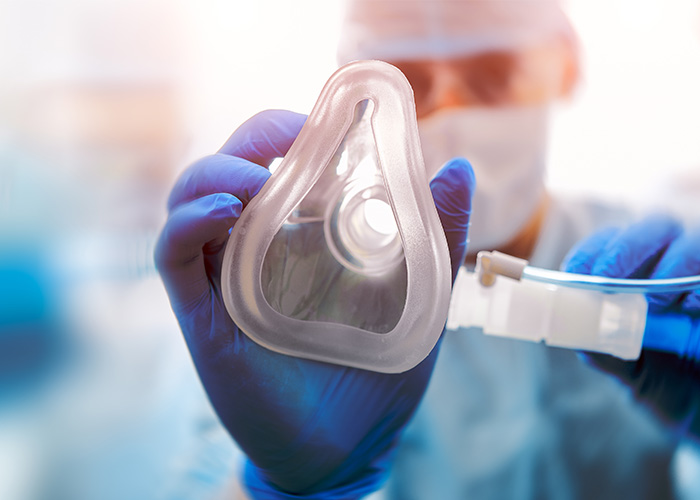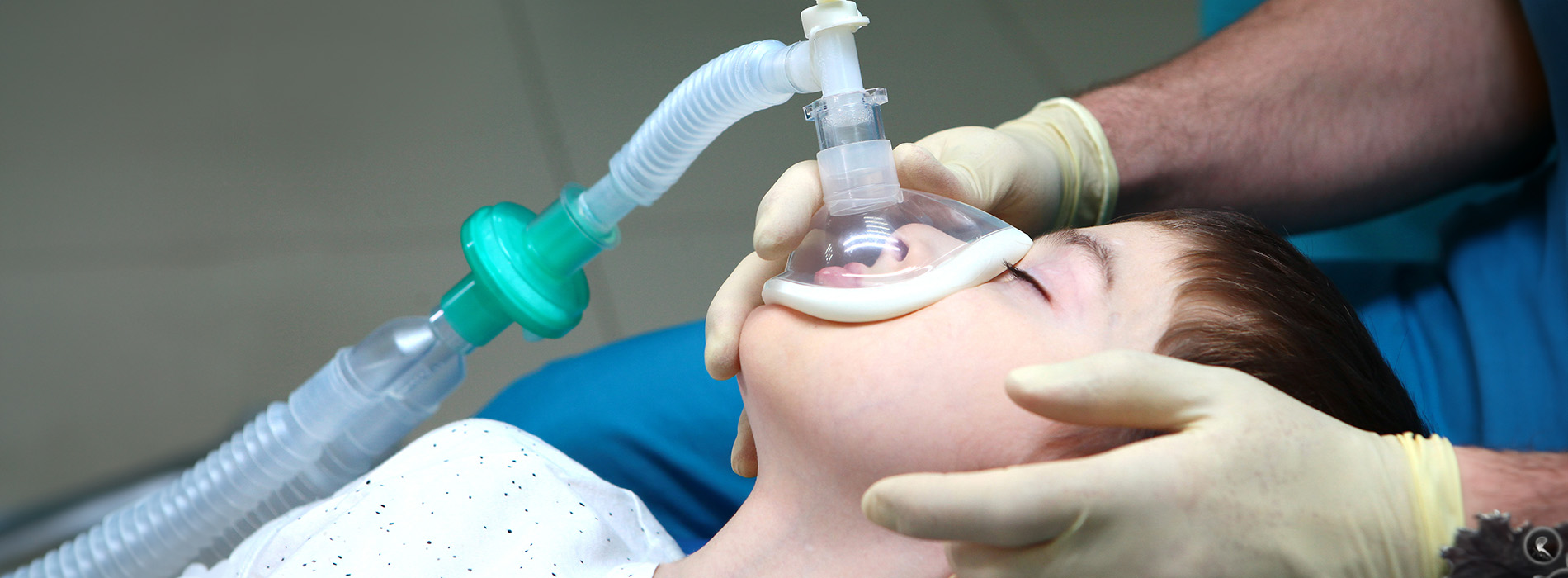
Our Office
2615 West 24th St.
Plainview, TX 79072
Existing Patients: (806) 296-6057
New Patients: (806) 217-7472
Visit Us Online

General anesthesia is a medically supervised state of controlled unconsciousness used to allow safe, painless care for children who cannot tolerate awake dental treatment. Unlike minimal or moderate forms of sedation, general anesthesia renders a patient fully unconscious and unresponsive to pain for the duration of the procedure. In dental settings this approach is reserved for cases where keeping a child still and comfortable is essential to delivering thorough, efficient treatment.
The decision to use general anesthesia is made with careful consideration of the child’s medical history, the extent of planned dental work, and behavioral factors that might prevent successful treatment while awake. When provided in a hospital or accredited ambulatory surgery center, anesthesia care includes intravenous access or inhaled agents, advanced airway management, and continuous monitoring of breathing, heart rate, oxygen levels, and blood pressure. A licensed anesthesiologist leads this process and collaborates closely with the dental team to coordinate care.
Families appreciate that general anesthesia allows multiple procedures to be completed in a single visit, reducing the number of times a child must undergo dental care. That efficiency is balanced by a focus on safety: anesthesiologists follow established protocols and use specialized equipment to support breathing and circulation while minimizing risk. For parents seeking reassurance about the process, a transparent review of the plan and clear communication before, during, and after the appointment help set expectations.
General anesthesia is typically considered for children who require extensive restorative or surgical work that would be difficult or unsafe to perform while they are awake. This can include multiple crowns, extractions, or procedures associated with dental trauma or complex oral surgery. It’s also an appropriate option for very young patients whose cognitive or developmental stage prevents reliable cooperation with in-office treatment.
Children with significant anxiety, severe gag reflexes, or certain medical conditions that complicate standard dental care may also be better served with general anesthesia. In special-needs populations — for instance, children with mobility challenges, communication barriers, or sensory disorders — general anesthesia can enable comprehensive care that would otherwise be unattainable. The clinical team always weighs the potential benefits against risks and explores alternatives like behavioral strategies or lighter sedation when appropriate.
Another common reason to recommend general anesthesia is the desire to complete all necessary procedures in one controlled session, thereby minimizing repeated exposures to medications and reducing the emotional burden on the child and family. That said, each case is individualized: the anesthesia team, dental providers, and the child’s primary physicians collaborate to determine the safest, most effective path forward.
Preparation begins with a thorough pre-anesthesia evaluation that reviews the child’s medical history, current medications, allergies, and any previous experiences with anesthesia. Parents are asked detailed questions to identify conditions that might influence anesthesia management, such as recent illnesses, breathing problems, or neurological issues. That information supports a tailored plan designed to reduce complications and ensure a smooth perioperative course.
Before the scheduled appointment families receive clear instructions about fasting, medication guidance, and arrival times. These guidelines are essential because an empty stomach helps reduce the risk of aspiration during anesthesia. The anesthesiology team also explains what will happen on the day of the procedure, including the induction process, types of monitoring used, and the expected timeline for recovery—transparent communication helps ease anxiety for both children and caregivers.
In facilities equipped for dental general anesthesia, the clinical environment is prepared with pediatric-appropriate monitoring devices, emergency equipment, and trained staff who specialize in supporting young patients. An anesthesiologist or nurse anesthetist administers medications and manages the airway, while nursing personnel handle vital signs and comfort measures. This team-based approach ensures that every aspect of safety and comfort is addressed before a single treatment begins.
On the day of treatment, the child is greeted by the care team and settled into a preoperative area where last-minute checks are completed. Induction of anesthesia may be achieved through a calm inhaled mask experience or an intravenous medication, depending on the plan agreed upon during the pre-anesthesia visit. The transition from awake to anesthetized is closely observed, with continuous monitoring of oxygen saturation, heart rate, and respiratory status from the outset.
During the procedure, the anesthesiologist continually assesses and supports the child’s airway and vital functions while the dental team performs the planned restorations or surgery. Advanced monitoring technology and established safety protocols help detect and address any physiological changes immediately. The goal is to provide a stable anesthetic plane that keeps the patient comfortable and protected while allowing the dentist to work efficiently and precisely.
When the dentistry is complete, anesthetic medications are decreased and the child moves into the recovery phase. Providers continue to monitor breathing, circulation, and level of consciousness as the patient awakens. Pain and nausea prevention strategies are used as appropriate, and recovery staff ensure the child is stable, alert, and able to tolerate fluids before discharge. Parents receive clear post-anesthesia instructions covering activity, diet, medications, and signs that warrant prompt contact with the care team.
Safety is the central principle guiding the use of general anesthesia in pediatric dentistry. An experienced anesthesia provider, pediatric-capable monitoring, and a coordinated dental team together reduce risk and promote the best possible outcomes. Rather than rushing through decisions, the care team emphasizes careful planning, individualized anesthesia choices, and honest discussions about benefits and potential side effects.
Common transient side effects—such as grogginess, mild nausea, or a sore throat from airway support—are explained in advance so caregivers know what to expect as the child recovers. The team also outlines clear return-to-care instructions and what symptoms would justify an immediate call to the clinic or an emergency facility. This level of communication helps families feel supported during the recovery period and reassured that follow-up is available if questions arise.
At Texas Super Smiles for Kids we coordinate closely with board-certified anesthesia specialists and regional surgical facilities to ensure every child receives age-appropriate, evidence-based care. Our responsibility is to blend clinical expertise with family-centered communication so that procedures performed under general anesthesia are as safe, efficient, and stress-free as possible for everyone involved.
In summary, general anesthesia is a valuable, carefully managed option for children who need extensive dental care, have significant anxiety or medical complexities, or cannot tolerate treatment while awake. When chosen, it is delivered by trained anesthesia professionals working alongside dental specialists in a monitored setting to prioritize safety and comfort. If you would like more information about how general anesthesia might be used for your child’s dental care, please contact us to discuss your questions and options.
General anesthesia is a medically supervised state of controlled unconsciousness that allows children to undergo dental treatment safely and painlessly when they cannot tolerate awake care.
It is considered for children needing extensive restorative or surgical work, those with severe anxiety, strong gag reflexes, special needs, or when multiple procedures need to be completed in one visit.
Unlike minimal or moderate sedation, general anesthesia renders a child fully unconscious and unresponsive to pain, allowing safe completion of complex dental procedures.
A licensed anesthesiologist or nurse anesthetist provides general anesthesia, continuously monitoring the child’s breathing, heart rate, oxygen levels, and blood pressure throughout the procedure.
Families complete a thorough pre-anesthesia evaluation covering medical history, medications, allergies, and recent illnesses. Fasting instructions and arrival times are provided to reduce risks.
The child is prepared in a preoperative area, anesthesia is induced via mask or IV, and the dental team performs the treatment while the anesthesiologist monitors vital signs continuously. Recovery is closely supervised afterward.
Yes. When administered by trained professionals in an accredited facility with proper monitoring, general anesthesia is safe, and every step is designed to protect the child’s comfort and health.
Mild grogginess, nausea, or a sore throat may occur. These are typically short-lived, and caregivers receive instructions on what to watch for during recovery.
By allowing children to undergo treatment while fully asleep, general anesthesia minimizes fear and stress, enabling completion of necessary dental work in a single, comfortable visit.
The dental and anesthesia teams assess the child’s medical history, behavior, treatment needs, and risks. Families receive detailed explanations and alternatives to make an informed decision.
